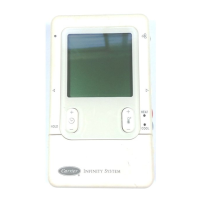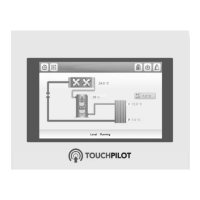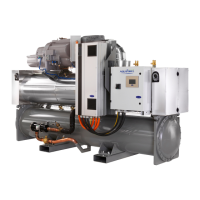101
6 DIAGNOSTICS – TROUBLESHOOTING
This section provides the overview of actions to be taken in case any operating problems occur.
6.1. General
The 19 Series Carrier® SmartVu
TM
control system has many fault tracing aid functions. The local
interface and its various menus give access to all unit operating conditions.
If an operating fault is detected, an alarm is activated. The alarm code is displayed in the Alarms menu,
sub-menus “Reset alarms” and “Current alarms”. The control may record up to 5 current alarms and
alerts.
6.2. Displaying Alarms
The alarm icon on the interface allows the quick display of the unit status.
The yellow alarm icon indicates that the unit is still operational, but there is a warning.
The red alarm icon indicates that the unit has stopped due to an alarm.
The “Reset Alarm” menu on the display panel can display the current alarm / warning codes of up to 5
units.
6.3. Resetting Alarms
When the cause of the alarm has been identified and corrected, the alarm can be reset, depending on
the type either automatically or manually (once the action has been taken on the unit).
In the event of a power supply interrupt, if Auto Restart Option is set to ENABLE in Option configuration
menu, the unit restarts automatically without the need for an external command. However, any faults
active when the supply is interrupted are saved and may in certain cases prevent a unit from restarting.
A manual reset must be run from the main interface via the ALARMRST menu, item RST_ALM.
NOTE: Please note that once the alarm has been corrected or reset, all alarm information will be
saved in the alarm history menu. A maximum of 50 alarms can be saved. After more than 50 alarms,
the alarm information that is saved first will be overwritten by subsequent information (following
the FIFO) the rules).

